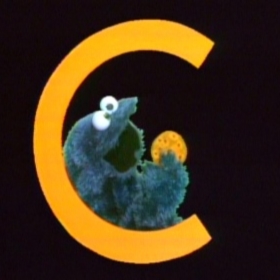The Future

How do you talk about the future in Icelandic? The answer is made a little bit more complicated by the fact that Icelandic has no future tense. This does not mean that Icelandic has no way to talk about the future, but it does so in ways other than simple verb conjugation. In fact, this is very similar to English, which also lacks a future tense. Just like English, Icelandic expresses the future with the present tense and auxiliary verbs (or helping verbs).
Present as Future
In Icelandic, just like in English, you can use the present tense to talk about the future. This usually, but not always, requires a time marker like tomorrow or on Thursday or something similar.
- Kemstu í partýið á laugardaginn? > Can you come to the party on Saturday?
- Nei, ég er að vinna snemma á sunnudaginn > No, I’m working early on Sunday.
- Ég kem aftur > I will be back.
- Hvenær er flugið þitt? > When is your flight?
Að verða
Að verða is its own verb, with its own entry in the dictionary and everything, but it can be thought of as the future tense of að vera (to be). In that sense að verða can be thought of as meaning will be. Note that að verða can also have meanings other than indicating the future, but which meaning is intended should generally be quite clear from context.
- Svifnökkvinn minn verður fullur af álum ef þú gerir þetta > My hovercraft will be full of eels if you do this.
- Mýs verða einvaldar í framtíðinni > Mice will be dictators in the future
- Eftir fimm ár verða regnhlífar úreltar > Umbrellas will be obsolete in five years.
Auxiliary Verbs
You can use any of various auxiliary verbs (AKA helping verbs) to indicate futurity. In this article we’ll take a look at three of the most important:
- Að ætla að > to be going to, to plan to, to intend to
- Að munu > will
- Að skulu > ‘ll. This will make sense, I promise.
Að ætla að
Að ætla að is the Icelandic equivalent to the English going to and possibly the most common way to mark the future in Icelandic. It is an imperfect equivalent to going to as it has a strong connotation of intent or planning.
If going to could be replaced with planning to, ætla is the right translation. It would be ridiculous to plan on things such as falling or getting injured (unless you are a football player). “I’m going to fall” or “you’re going to hurt yourself” would generally not be translated with ætla but one of the other methods of marking the future discussed in this article.
- Ég ætla að vera tannlæknir þegar ég verð stór > I’m going to be a dentist when I grow up.
- Ætlar Jón ekki að hætta þessu rugli? > Isn’t Jón going to stop this nonsense?
- Ég ætlaði að segja þetta! > I was going to say that!
Að munu
Að munu is the Icelandic equivalent to will. Since verða essentially means will be, munu is almost never used with vera (be) to indicate futurity.
It is frequently over-used by second language learners who learn that it is how you mark the future, and then disregard ætla að, verða að, and the present as future. Note that, unlike ætla að and fara að, munu does not take að.
- Stjórnmálamenn munu aldrei segja satt > Politicians will never tell the truth.
- Ég hef ekki hugmynd um hvað mun gerast í sumar > I have no idea what will happen this summer.
- Hún mun aldrei hætta að læra íslensku > She will never stop learning Icelandic.
Að skulu
Að skulu indicates futurity with a strong association of willingness, such as when volunteering for something. Due to this connotation it’s much more commonly used with ég (I) than other persons.
When translating to English it generally translates as will, just like munu, but almost always in a contraction (“I’ll go,” “I’ll do it,” etc.), so in a way it can be said to translate as just the ‘ll.
Note that að skulu can also have meanings other than indicating the future, but which meaning is intended should generally be quite clear from context.
- Ég skal sýna þér mitt ef þú sýnir mér þitt > I’ll show you mine if you show me yours.
- Á morgun skal ég hjálpa þér meira > Tomorrow I’ll help you more.
- Við skulum fara núna > Let’s go now.
Summary
The present is frequently used to express the future, just like in English, often with a time marker like soon or on Tuesday. Að munu means will, but don’t overuse it: if you would say will be in English, use verða. Ætla að is the equivalent to going to, but only if there is intent.

Related reading
If you found this interesting, you might also be interested in these articles.




